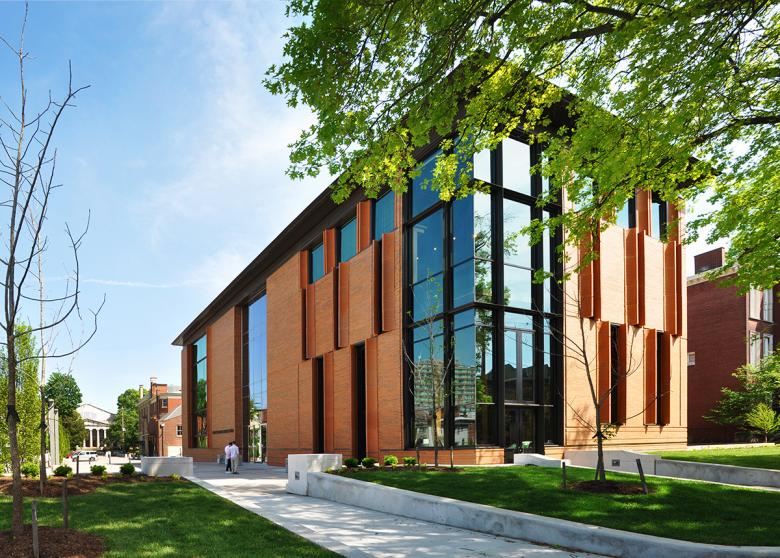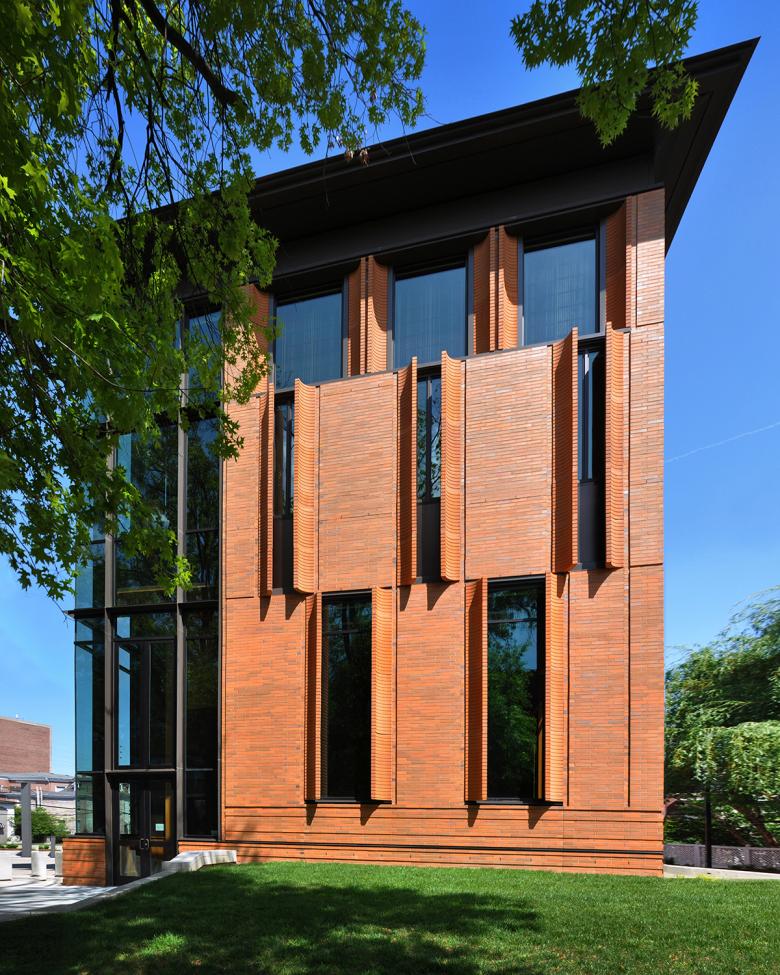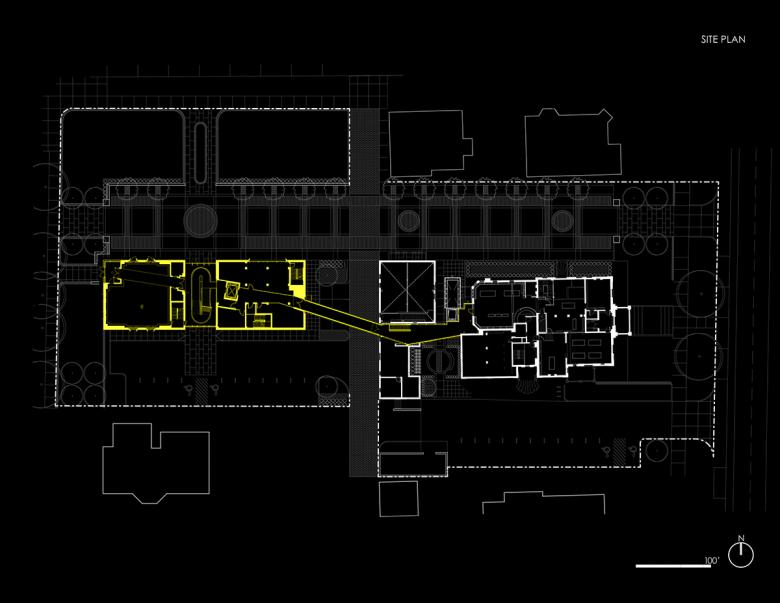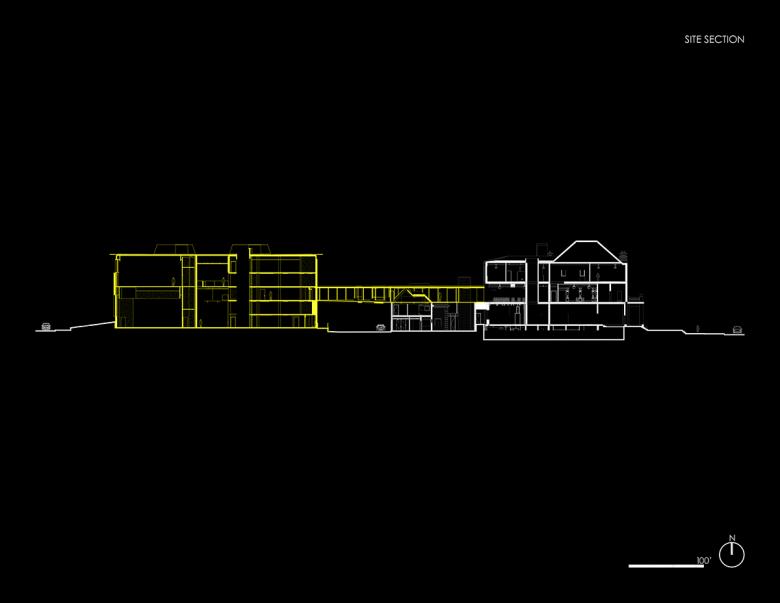US Building of the Week
The Owsley Brown II History Center
de Leon & Primmer Architecture Workshop
5. March 2018
Photo: de Leon & Primmer Architecture Workshop
Brick outside and wood inside, the Filson Historical Society's Owsley Brown II History Center narrates the history of the Ohio River Valley in a manner that is local yet contemporary. Nominated recently for the third Mies Crown Hall Americas Prize (MCHAP), the building had a soft opening in October 2016 and wrapped up construction in March 2017. de Leon & Primmer Architecture Workshop answered a few questions about the project.
Location: Louisville, Kentucky, USA
Client: The Filson Historical Society
Architect: de Leon & Primmer Architecture Workshop
Design Principals/Project Architects: Roberto de Leon, Jr. FAIA; M. Ross Primmer AIA
Project Manager: David Mayo AIA, Michael Gastineau
Structural Engineer: Tetratech
MEP/FP Engineer: Shrout Tate Wilson
Landscape Architect: MKSK
Contractor: Wehr / Realm
Construction Manager: Bill Receveur
Exterior Brick: Sioux City Brick
Interior Wood Finishes: Louisville Lumber & Millwork
Site Area: 1.65 acres
Building Area: 30,000 (renovation), 30,000 (expansion)
North Facade (Photo: de Leon & Primmer Architecture Workshop)
Please provide an overview of the project.
The Owsley Brown II History Center is a new, 25,000-square-foot facility for the Filson Historical Society that provides multi-use event spaces and archival storage. It is one component of a comprehensive campus expansion that links together existing historic structures with a new public plaza. Based in Louisville, Kentucky, the Filson Historical Society is an organization that collects, curates, and archives the rich narrative of the Ohio River Valley region, offering an ambitious range of educational programs and cultural resources that support this focus.
Envisioning a "New Filson" campus, the organization sought to create a state-of-the-art research institute that more clearly reflected its role as an inviting public resource engaging a broader community through interactive historic and cultural experiences. This modernization effort expands and updates the Filson’s assets.
Southeast View (Photo: de Leon & Primmer Architecture Workshop)
What are the main ideas and inspirations influencing the design of the building?
Configured to visually reveal its internal functions to the community, the new History Center deliberately contrasts the Ferguson Mansion – with its dense masonry walls and small apertures – by celebrating the advantages of current construction techniques which allow for layered, non-load bearing walls and large expanses of glazing. Embedded throughout the building are a series of transparent passageways and exhibit spaces that encourage exploration and discovery, while an elevated pedway weaves between the History Center, Carriage House, and Ferguson Mansion.
Guided by extensive, contextual research of the Old Louisville preservation district, and inspired by the architectural components of the Ferguson Mansion, the project recalls and re-invents traditional period details. Ornate ceilings, elaborate staircases, carved wood-paneled walls and other elements are reinterpreted with new fabrication techniques that explore proportionality, depth, and layering of materials common to the neighborhood context. In an abstract reference to The Filson’s historical focus on the Ohio River Valley region, the interior details draw on conceptual precedents such as water droplets, ripples, and refracted surfaces.
West Facade (Photo: de Leon & Primmer Architecture Workshop)
How does the design respond to the unique qualities of the site?
Headquartered within the historic neighborhood of Old Louisville, The Filson campus is encompassed by the nation’s largest contiguous collection of Victorian mansions, developed during the Great Southern Exposition in the late 1800s. After 130 years of collection and operation, The Filson outgrew its existing home in the Ferguson Mansion – an historic example of Beaux Arts architecture. Within this context, the new History Center design is influenced by in-depth research and documentation of circa-1800 figure/ground development densities, historical residential proportions, and a material palette common to the neighborhood. Additionally, the new Filson campus organization, with its open public plaza, knits together adjacent blocks while providing a porous visual & physical boundary.
Through an inclusive design process, The Owsley Brown II History Center is the only large-scale building within historic Old Louisville to receive unanimous approval by the city’s Landmark Commission in over 40 years.
South Facade (Photo: de Leon & Primmer Architecture Workshop)
How did the project change between the initial design stage and the completion of the building?
The project was completed following an eight-year period of design, private fundraising, and construction. Due in large part to the Filson’s leadership and its board of directors, the project has remained true to its initial design concept.
Staircase (Photo: de Leon & Primmer Architecture Workshop)
What products or materials have contributed to the success of the completed building?
The History Center was an opportunity to explore the potential of building materials common to the historic neighborhood – primarily brick and wood. While aiming to achieve a design sensibility that evoked the handcrafted nature of the original historic structures, the perceived complexity of the project is actually driven by economy and ease of fabrication. For example, profiled wood slats are designed to minimize waste by using both the positive and negative results of the cut. Repetition, panelization, and off-site pre-assembly of components simplified installation.
Email interview conducted by John Hill.













